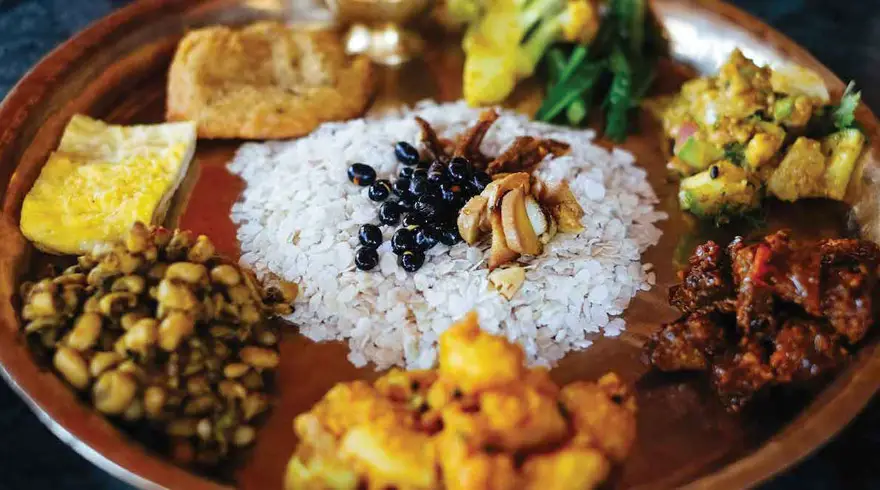As a Nepali kid growing up in the U.S., I was the stereotypical, ungrateful second-generation brat who wanted to eat pizza every night instead of home-cooked food. But as soon as I went off to college and was subjected to two semesters of the banal horror that is dining hall food, I really started to appreciate the Nepalese food I grew up with a lot more.
People are usually curious about Nepalese food, but they don’t really seem to have a metric to understand it. I tend to tell people that Nepalese food sits somewhere between Indian and Chinese food. This is an easy explanation that isn’t quite true.
Although Nepalese food has similarities with Indian food in terms of some of the spices used (i.e. cumin and coriander) and similarities with Chinese food in terms of some of its ingredients (i.e. bamboo shoots), as a cuisine, it really is unique enough to stand on its own.
The basic, underlying principles of Nepalese food are as follows: First, it tends to be rice-based, since rice is the staple grain of Nepal. Second, it tends to be less spicy than Indian food — but what it lacks in spice, it makes up for in other flavors, especially flavors on the sour/savory end of the spectrum.
Third, it tends to be pretty simple: dishes often only have a few ingredients, along with some spices thrown in for taste. Lastly, because Nepal is incredibly ethnically diverse, Nepalese food is similarly diverse.
There are a lot of dishes that are made primarily among certain ethnic groups that people of other ethnicities rarely eat, and there are a million ways to make even the dishes that are more universally eaten.
My knowledge of Nepali food is limited to what I grew up eating, so it goes without saying that the five dishes I’ve chosen as a beginner’s primer to Nepalese food barely scratch the surface. I also can’t guarantee that you’ll be able to find all of these dishes at a Nepalese restaurant, but if you’re ever lucky enough to be invited over to a Nepalese person’s house for dinner, you’ll encounter a lot of them.
1. Dal Bhat
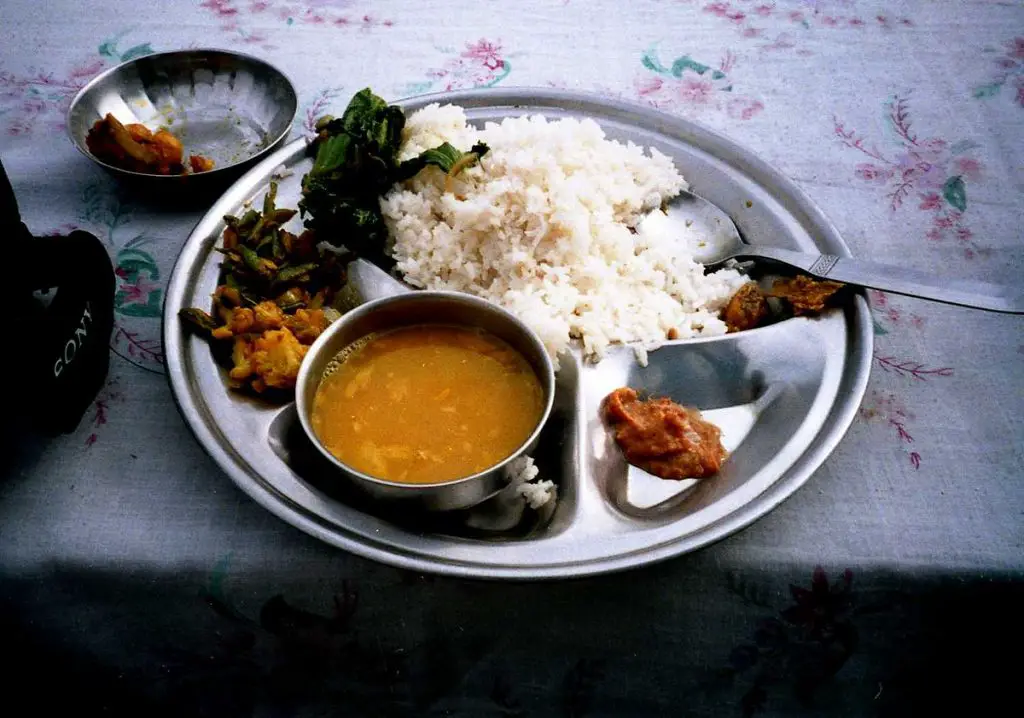
Dal bhat is as classic as Nepalese food gets. It’s basically white basmati rice with lightly spiced lentil soup, but it’s so much more than that. It is an all-day, everyday kind of food: truly, the underappreciated workhorse of the Nepalese diet.
Dal bhat is so ubiquitous that around meal times, Nepali people don’t ask you if you’ve eaten yet — they ask, “bhat khayo?” which literally translates to, “Have you eaten rice yet?”
Growing up, I hated dal bhat because it’s all I ever ate at home — but these days, because I don’t get to eat it very often anymore, it’s become a comfort food for me. The creaminess of the lentils, coupled with the filling-ness of the rice, paired with the freshness of a light sprinkling of cilantro? Heaven.
2. Momo
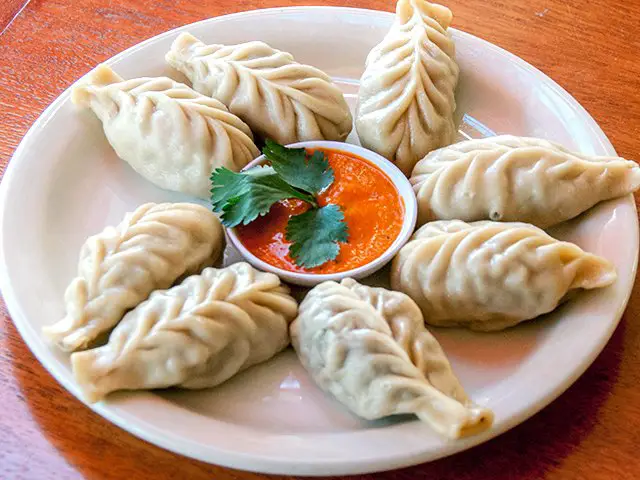
Momo are God’s gift to mankind. Any culture that has some form of dumplings in their cuisine will argue to the ends of the earth that theirs is the best. I can definitively tell you that everyone else is wrong because momo are objectively the best dumplings.
Momo are stuffed, steamed dumplings usually served with some kind of dipping sauce (called achar). The filling is usually ground meat (ideally with a high-fat content) mixed with garlic, ginger, cilantro, cabbage, onion and spices; the wrapper is a simple mix of flour and water rolled out thin into rounds and then stuffed with the filling.
Stuffing momo tends to become an event on its own: since there are so many to fill, everyone tends to join in and show off their unique style of crimping the wrapper. When they’ve all been filled, the momo are tossed into a steamer. A few minutes later, they emerge and then everyone eats until they feel like they’re going to burst because that is the only correct way to eat momo.
3. Aloo Tama Bodi
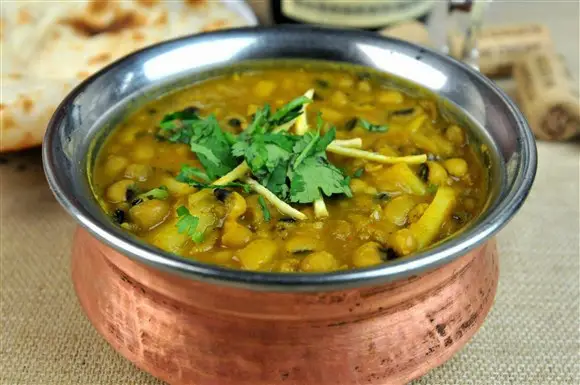
The great thing about a lot of Nepali dishes is that they’re not hiding anything: the ingredients are right in the name. Aloo tama bodi is one of these dishes: it’s basically a stew of potatoes (aloo) with bamboo shoots (tama) and black-eyed peas (bodi), with some spices thrown in for flavor.
You get a little kick of spice, a little bit of sour and savory from the bamboo shoots and some creaminess from the bodi and the potatoes: a winning combination.
I will admit that when I was younger and significantly dumber, I used to refuse to eat aloo tama because I thought bamboo shoots were “panda food.” Anyone who has ever eaten bamboo shoots should know that this is an idiotic position. Bamboo shoots are delicious, and pandas clearly know what they’re doing.
4. Sel Roti
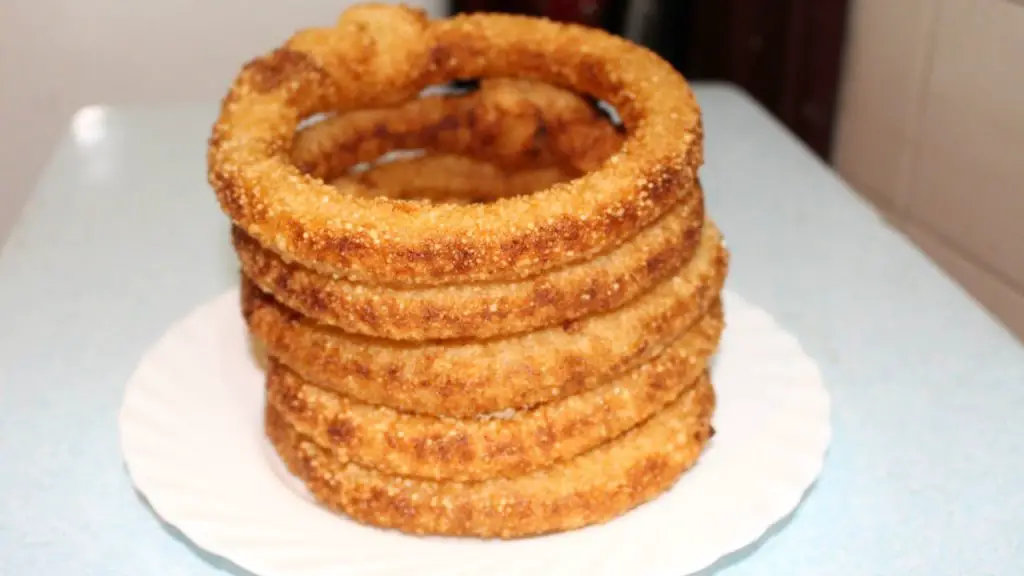
Sel roti is a dense, rice flour-based doughnut. The batter is made up of rice flour, milk, water, oil, cardamom, cloves and sugar. The batter is dropped into oil in the shape of a ring, deep fried and then set out to cool. It’s usually only made for festivals or important ceremonies, so most Nepali people see it as more of a treat, rather than an everyday food.
Fresh sel roti is one of life’s greatest pleasures: pillowy soft, super fatty with a touch of sweetness – it checks all of my boxes for a fried dessert. Because it’s more subtly sweet than sugary, it’s doesn’t feel like a dessert in the American sense, but it’s still damn delicious.
Whenever someone from my family goes to visit Nepal, they always come back with a stack of sel roti wrapped in newspaper, lovingly made by my grandmother. To my disappointment, it always arrives stale and tough, nothing like the way it is fresh out of the fryer — but since I can’t fly over to Nepal willy-nilly and stuff myself to my heart’s desire with fresh sel roti, I’ll take what I can get.
5. Mula Ko Achar
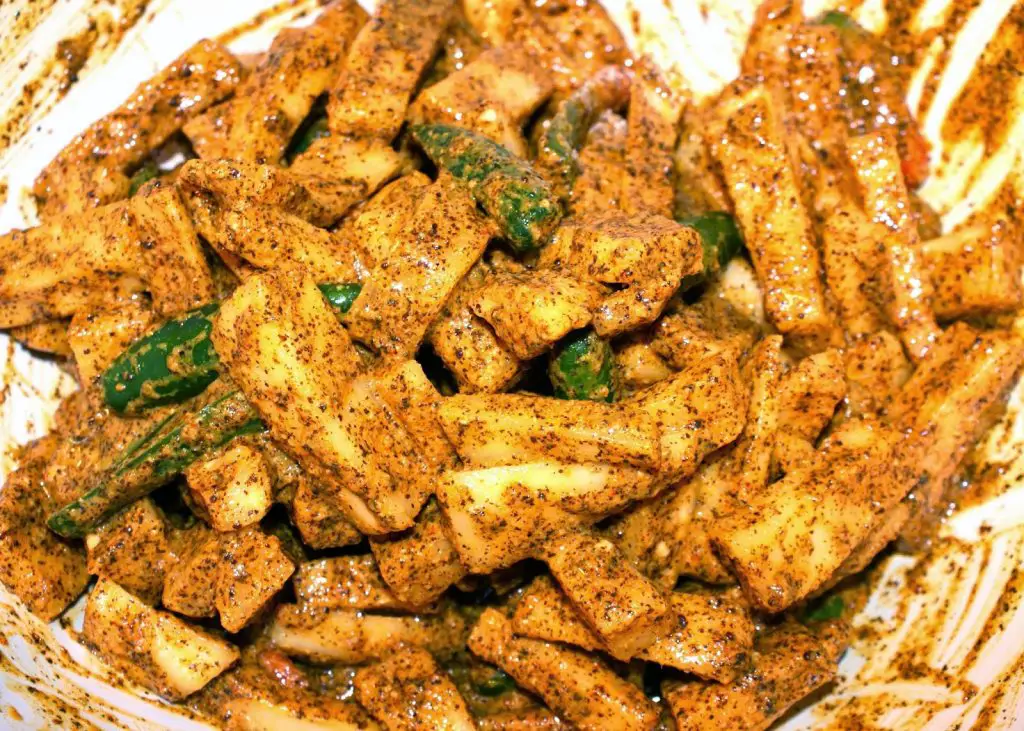
I have to be honest: Call me a fake Nepali, but I have no love whatsoever for mula ko achar. It is rank; plain and simple. Truly, it is one of the most pungent food smells I have ever encountered. Taste-wise, I guess mula isn’t terrible, but it’s definitely not good enough to make up for the horrible trauma my nose has to go through every time I’m in the mere vicinity of it.
What exactly is mula ko achar? It’s essentially pickled daikon radish: a spicy, savory, sour condiment that adds a little bit of flavor and crunch to a meal. It is definitely an acquired taste, and it’s even more of an acquired smell. I swear to God, I am not exaggerating about the smell.
Just as an example: whenever someone brings over mula ko achar, my family has to keep it in a mini fridge just so it won’t stink up our main fridge. In fact, the smell is so bad that fart jokes in Nepal tend to revolve around comparisons to mula.
It’s one of the very few Nepalese foods that I would not recommend to everyone — but if you’re an adventurous eater and you don’t mind the odd bad-food smell, go for it.


